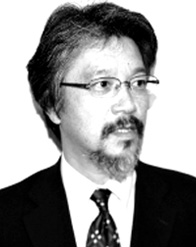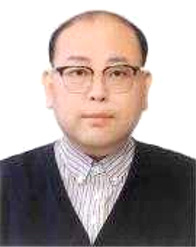Keynote Speakers
Keynote Speakers

Flow properties of fire-induced thermal currents
- October 22(Tue), 09:30-10:00
- Convention Hall A
Biography
He graduated from the Department of Applied Chemistry, Faculty of Science, Tokyo University of Science in 1985.
He completed a master's degree in applied chemistry at the Graduate School of Science, Tokyo University of Science in 1987.
He left the doctoral course with credit completion in architecture at the Graduate School of Science and Technology, Tokyo University of Science in September 1991.
Since joining Yokohama National University in October 1991, he has been involved in teaching and research related to fire safety engineering for over 30 years.
He received his doctorate in engineering in 1994.
His research area covers a wide range of topics such as
· Ceiling-jet characteristics under flat and/or inclined ceilings
· Smoke layer characteristics in tunnel fires
· Plume characteristics over a horizontally oscillating fire source
· Firefighter fatigue during firefighting operations
· Combustion behaviour in poorly ventilated compartment fires
· Response of multi-spectrum infrared flame detectors to diffusion flames partially hidden by obstructions
He received the best paper award at the 8th Asia-Oceania Symposium on Fire Science and Technology in 2010, the Japan Association for Fire Science and Engineering Award in 2015, and the best paper award at the Japan Society for Safety Engineering in 2019.
Abstract
As is well known, the fire phenomenon itself is a complex of combustion, gas flow, heat transfer and other phenomena, and the variety of fire sources and fire growth spaces means that each has its own specific problems to solve. Therefore, the field of fire safety engineering requires not only the accumulation of scientific knowledge about fire properties, which vary according to the conditions of fire occurrence, but also the technological evolution to practically handle fire safety issues based on this knowledge.
We accumulate scientific knowledge by conducting experiments focused on the target fire phenomenon and deriving empirical formulae based on the obtained measurement results, by deriving semi-empirical models based on theoretical considerations and experimental results, and by interpolating measured data through numerical experiments for phenomena that cannot be covered by experiments alone, or by applying numerical simulations for phenomena that cannot be covered by experiments alone. To achieve this, we aim to understand complex fire phenomena by using three approaches: experiments, theory, and numerical calculations.
This presentation will cover three topics related to the presenter’s work on predictive calculation methods for fire-induced hot air flow phenomena, which are essential for the smooth operation of performance-based fire safety design methods.
It is hoped that the application of these research approaches will contribute in some way to the future development of fire safety engineering.

Pedestrian and evacuation dynamics
- October 22(Tue), 10:00-10:30
- Convention Hall A
Biography
Prof. Weiguo Song, full professor of the State Key Laboratory of Fire Science, University of Science and Technology of China. He got Bachelor's and Ph.D degree in the University of Science and Technology of China, and has served as a guest researcher at NIST. He is engaged in fundamental research on fire dynamics and evacuation dynamics, and is leading multiple national scientific research projects such as the National Key Research and Development Program and the National Natural Science Foundation of China. He has published over 100 SCI-cited papers, obtained 11 invention patents and 8 software copyrights, and has been continuously selected for the Elsevier China Highly-cited Scholars for the past 10 years. His research results have provided reference for the International Building Code (IBC) and Chinese national standards, and have been applied to nearly 100 important buildings and places. He won the second prize of National Science and Technology Progress Award of China, China Youth Science and Technology Award etc. He has served as a member of PED and TGF Steering Committee, chairman of the organizing committee of PED conference, topic leader of IAFSS symposium, organizer and co-chair of IAFSS evacuation workshop.
Abstract
In many countries, there are large scale of crowd gatherings during festivals, religious activities, sport games and so on. Sometimes disaster may occur and causes massive loss of human lives. In recently years these kind of disasters occurred in India, Korea, Indonesia, Israel, Cambodia, China, Arabian countries and many other countries. The scientific problems behind these activities is pedestrian and evacuation dynamics (PED), that is very important to understand crowd motion. The aims of PED is to increase the safety and comfort of pedestrians. The tools and methods used in PED study and design include legal regulations, guidelines and handbooks and computer simulations. Usually prescriptive methods, macroscopic models and microscopic models are used. To develop such methods and models, the theory, data and model of PED is in great need. However pedestrian and evacuation dynamics is very complicated. There are limited basic data, but big differences between data. There are over 100 models, but the reliability and applicability of models is still limited. The contradictions of data and models may be due to many reasons, including measurement methods, flow direction, psychological factors, environments, composition of crowds, education and many other factors. In this presentation, progress in PED experiments and data processing method is introduced. The PED experimnts include multiple scenarios, e.g. single file, straight channel, bottleneck, turning channel, crossroads, crawling, animal motion, stairwell, obstacles experiment etc. The high-density crowd experiment and heterogenous experiment is introduced in detail. The pedestrian behaviors, interaction between pedestrians, velocity characteristics and fundamntal diagrams are analyzed. The heterogeneous characteristics leading from old people, children or the disables are discussed. Then the data processing method, especially pedetrian detection method based on deep learning, together with relative dataset is introduced. A velocity and density extraction mothod based on multi-level dilated CNN and optical flow is built. It is indicated that the method is good at velocity and density analysis based on input pedestrians pictures, and the calculation results are consistent well with true values eithre in experiment scenario or real scenario. The calculation efficiency of the method is much higher than traditional method. Based on the pedestrian detection module and location prediction module, a trajactory extract method is built. After input consecutive frames of pedestrian video, the method can give pedestrian trajactories in a high efficiency. The results are consistent with true value, and the precision and recall value is fairly good. The progress in pedestrian and evacuation dynamics is very fast in recently years, the discusstion and collaboration is very important for the PED study community.

Lithum-ion Battery Fire Safety
- October 23(Wed), 09:30-10:00
- Convention Hall A
Biography
Dr. Hyungjun Kim received his Ph.D. in 2012 from the University of Tokyo, Japan for his research on the spalling mechanism due to deformation of polymer cement mortar in high-temperature environments. He joined the Korea Conformity Laboratories (KCL) in 2013 and is currently a principal research engineer of Advanced Fire & Disaster Management Center. He is actively conducting research in the fields of special fires and firefighting, including research and development of fire impacts and extinguishing methods in buildings for special fires such as fire-resistant material structures for buildings, electric vehicle fires, ESS fires, and hydrogen fires, and standardization. arc7707@kcl.re.kr
Abstract
Fire Characteristics and Suppression Tests of Electric Vehicles (Lithium-ion Batteries)
Recently, there has been heightened phobia regarding electric vehicles in Korea, especially following a fire accident involving an electric vehicle in the underground parking lot of an apartment complex in Cheongna, Incheon. In Korea, outstanding researchers have been actively studying the electrical safety and fire safety of large secondary batteries, particularly lithium-ion batteries, used in electric vehicles. Our research team has been conducting extensive studies on the fire characteristics of lithium-ion batteries and the fire behavior of electric vehicles equipped with these batteries, as well as their suppression properties.
In the industrial sector, ensuring fire safety is becoming a critical issue, especially as electric vehicles and energy storage systems (ESS) used in power grids, along with other renewable and new energy sources, are being promoted as future national strategic industries. In this keynote presentation, we aim to introduce the research conducted by KCL to date. We hope this will provide useful information for researchers in the field of lithium-ion battery fires and serve as a platform for research collaboration, bringing us closer to resolving fire safety issues
In this presentation, I will cover the following topics:1. Fire characteristics of lithium-ion battery systems for electric vehicles
2. Suppression characteristics of lithium-ion battery systems for electric vehicles
3. Fire characteristics of electric vehicles based on battery cell types
4. Fire safety facilities in electric vehicle charging zones within underground parking lots
Given the high level of interest in these matters, we plan to continue discussing opinions and perspectives through ongoing collaboration to enhance the quality and advancement of the research.

Fire Safe Green Facades: Development and Prospect
- October 23(Wed), 10:00-10:30
- Convention Hall A
Biography
PhD degree from the Department of Architecture, University of Cambridge, UK in 2009 under the supervision of Professor Koen Steemers.
Now an Associate Professor in the Department of Architecture and Civil Engineering, City University of Hong Kong. She is currently the Program Leader of Architectural Engineering.
Nadia published more than 100 SCI journal articles. She has attracted over US$2.5 million research and development funds from government funding agencies. Her research interests including:
The application of Computational Fluid Dynamics in simulating fires, natural ventilation, facade fires, smoke toxicity and fire safety in green and sustainable buildings.
Abstract
Double-skin facades (DSFs) can provide passive building solar control. Putting in plants to create double-skin green façades (DSGFs) can reduce solar heat gain. A new energy harvesting system using appropriate plants can convert solar energy to chemical and electrical energy. This gives a new and clean energy source in second-generation green buildings. However, the fire hazard of DSGFs is a key concern in its wide application.
Fire-safe DSGFs with energy-harvesting design in tall green buildings will be investigated and developed in this project. Energy harvesting system will be studied on fundamentals of photosynthetic microbial fuel cells (MFCs); improvement of the MFCs energy harvesting efficiency; and optimization of DSGFs. Fundamentals on extracting photosynthetic energy in MFCs will be simulated by First-Principles Molecular Dynamics. Energy harvesting efficiency will be explored in DSGFs. It is envisioned that the photosynthetic MFCs with a maximum utilization of building envelop can provide a maximum power output of 65 mW/m2.
DSGFs will have combustibles on green plants for passive solar control; and energy harvesting system with MFC. Fire research is needed on examination of the hazardous scenario created in the façade cavity by a window plume from a flashover fire in an adjacent room. Dry plants and other combustible components can be ignited easily. The subsequent conflagration would emit vast quantities of hot toxic gases and particulate matter that would be trapped in the façade cavity. Breaking the interior glass skin would spread smoke to upper rooms. Moreover, the stack effect of tall buildings would drive the movement of smoke and flames within the façade cavity, particularly in places with very low outdoor winter temperatures. Integrated understanding for the provision of fire-safe DSGFs with energy harvesting systems is necessary.
